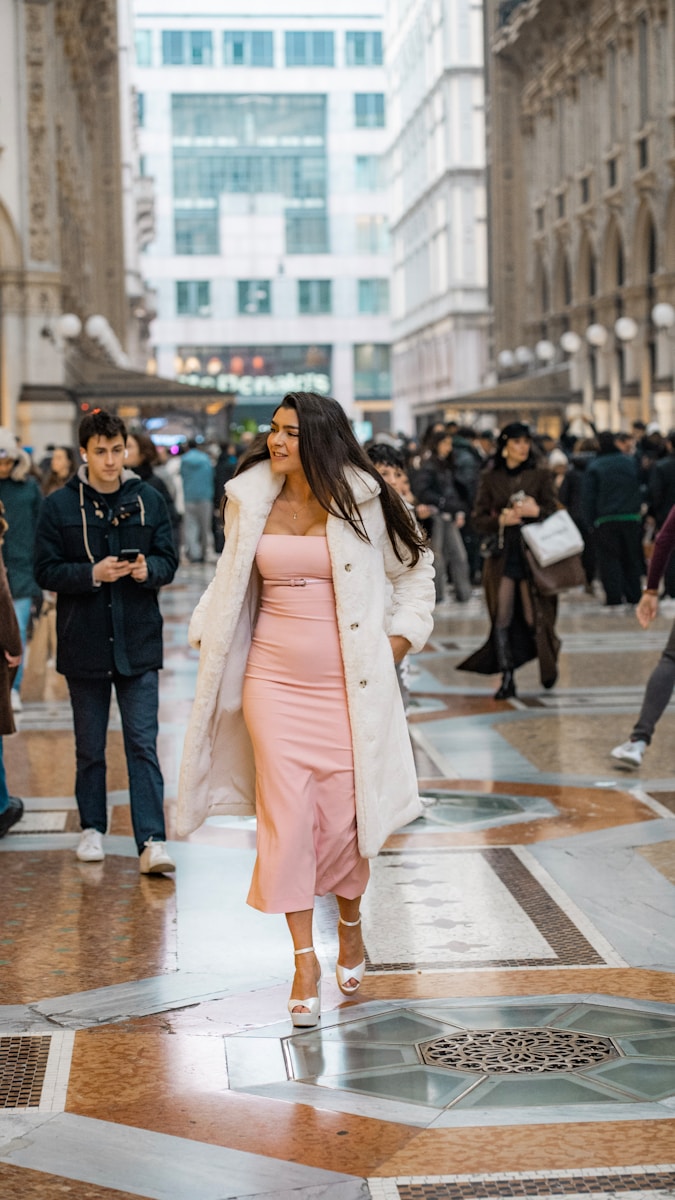In the fast-paced world of city living, where trends come and go with startling speed, a subtle but significant shift in fashion is occurring. It’s a movement towards quiet luxury, a concept that prioritizes understated elegance, superior craftsmanship, and timeless designs over conspicuous branding and ostentatious displays of wealth. This emerging trend in city fashion speaks to a broader cultural desire for authenticity, subtlety, and personal expression, rejecting the flashy and overt signs of affluence that once dominated high fashion.
Quiet luxury is not just a trend—it is a redefinition of what it means to wear luxury in an increasingly image-conscious society. This movement has seen a rise in the popularity of minimalist designs, high-quality materials, and low-key sophistication. City fashion, which often mirrors the pulse of broader cultural shifts, has embraced this philosophy, bringing quiet luxury into the forefront of contemporary style. This essay explores the rise of quiet luxury in city fashion, analyzing its key characteristics, the cultural forces driving its popularity, and how this movement is shaping the future of fashion in urban centers.
Understanding Quiet Luxury
Quiet luxury, sometimes referred to as “stealth wealth” or “subtle luxury,” is a philosophy of luxury that emphasizes discretion and sophistication over obvious display. The hallmark of quiet luxury is the absence of bold logos, flashy patterns, or attention-grabbing embellishments. Instead, the focus is on impeccable craftsmanship, high-quality materials, and classic designs that are instantly recognizable to those with a refined taste but not necessarily to the general public.
What sets quiet luxury apart is the idea that true luxury does not need to shout. It is about subtlety, restraint, and refinement—qualities that often go unnoticed by the masses but are deeply appreciated by those who understand the value of craftsmanship and attention to detail. This concept can be seen in everything from minimalist clothing designs to sophisticated accessories that rely on texture and material quality rather than visible branding.
Key elements of quiet luxury include:
Timeless design: Clothes that are made to last, both in terms of durability and style. The emphasis is on classic cuts, neutral colors, and simple, elegant shapes.
Exquisite craftsmanship: High-quality materials such as cashmere, silk, and fine leather, often made by artisans with decades of experience.
Understated branding: Rather than relying on conspicuous logos or patterns, the luxury is evident through the craftsmanship, feel, and fit of the items.
Sustainability: As the world grows more environmentally conscious, quiet luxury often aligns with sustainability efforts, focusing on items that stand the test of time rather than disposable, trend-driven fast fashion.
The Cultural Forces Driving Quiet Luxury
The rise of quiet luxury in city fashion is deeply intertwined with broader cultural shifts. Several key factors contribute to the increasing popularity of this fashion movement:
- A Rejection of Consumerism and Status Symbols
In recent years, there has been growing disillusionment with overt displays of wealth and consumerism. The previous decades of conspicuous consumption, epitomized by bold logos, flashy designer labels, and ostentatious displays of status, have given way to a quieter, more introspective approach to luxury. As people become more conscious of their environmental impact and the social implications of excessive wealth, many are opting for luxury items that prioritize quality and longevity over quantity and trend-driven consumption.
The quiet luxury movement is, in part, a reaction against the culture of hyper-consumerism. In a world where everything is broadcasted through social media, the idea of wearing something quietly luxurious, that doesn’t shout for attention, has become both an act of rebellion and a way to signal sophistication. The emphasis is now on owning fewer, but better, things—an idea that appeals to both those in the upper echelons of society and the emerging middle class looking to invest in quality rather than fast fashion.
- The Influence of Minimalism
Minimalism, as both an aesthetic and a lifestyle, has had a profound influence on the rise of quiet luxury in fashion. The minimalist movement, which gained traction in the 1990s and 2000s, focuses on simplicity, clean lines, and functionality. Minimalist design prioritizes quality over excess, making it a natural fit for the quiet luxury ethos.
In city fashion, minimalist silhouettes are increasingly dominant, with tailored, well-cut garments in neutral colors such as black, white, beige, and navy replacing more ornate, logo-heavy pieces. The minimalist approach doesn’t just apply to clothing but extends to accessories as well. A single, elegant leather bag from a high-end brand, devoid of logos, has become more desirable than a bag adorned with visible brand names. The simplicity of minimalist luxury is its power: it is elegant without needing to announce itself.
- Sustainability and Ethical Consumption
With the growing awareness of the environmental damage caused by fast fashion, there has been a marked shift towards sustainability in fashion. Consumers are increasingly seeking out brands that prioritize sustainability, ethical production, and transparency in their supply chains. Quiet luxury, with its focus on timeless pieces made from quality materials, is inherently aligned with the values of sustainability.
Rather than disposable, trend-driven garments that quickly go out of style, quiet luxury champions longevity. High-quality fabrics like organic cotton, ethically sourced wool, and biodegradable leather not only last longer but also leave a smaller environmental footprint. Brands that embrace this philosophy often focus on producing fewer collections each year, avoiding the overproduction and waste commonly associated with fast fashion.
- The Digital Age and a Shift in Consumer Behavior
The digital age has changed the way people approach fashion. Social media platforms like Instagram and TikTok have accelerated trends, but they have also made consumers more discerning about their purchases. There is now a greater awareness of the impact of conspicuous consumption on personal image and social status. Many consumers, particularly those in urban areas, are opting for luxury items that are more private in their luxury—items that can’t be immediately identified by others based on a logo or a flashy design.
Social media has created a platform for influencers and celebrities to set trends, but at the same time, it has led to an increased desire for privacy and discretion. Quiet luxury appeals to those who wish to express their wealth and taste without needing validation from others. The concept of “luxury without logos” is particularly appealing to a generation that values privacy and authenticity over outward displays of status.
Key Characteristics of Quiet Luxury in City Fashion
As the quiet luxury movement has evolved, it has become a defining feature of contemporary city fashion. The following elements are central to the quiet luxury aesthetic:
- High-Quality Materials
In quiet luxury, the quality of materials is paramount. Fabrics like cashmere, fine wool, silk, and premium leather are the foundation of many quiet luxury collections. These materials not only look elegant but also feel luxurious against the skin. They are durable, timeless, and often require less maintenance, making them a practical yet sophisticated investment for those who value quality over quantity. - Tailored and Well-Fitted Silhouettes
The hallmark of quiet luxury is the emphasis on perfect fit and tailoring. The fit of a garment can elevate an outfit far more than its design or embellishments. In city fashion, tailored blazers, sleek trousers, and perfectly draped coats are staples of a quiet luxury wardrobe. These pieces have a lasting appeal, transcending seasonal trends, and providing a refined silhouette that exudes confidence and poise. - Subtle, Timeless Design
Unlike the bold prints and logos of more traditional luxury fashion, quiet luxury favors clean lines, neutral colors, and classic designs. Simple, elegant pieces like a well-cut trench coat, a crisp white shirt, or a pair of perfectly fitting jeans are emblematic of this movement. These garments never go out of style; they are as relevant today as they were years ago, making them the perfect addition to any wardrobe. - Function and Versatility
Quiet luxury is not just about looking good—it’s also about practicality. City dwellers, who often lead busy lives filled with work, social events, and travel, are drawn to clothing that is both functional and fashionable. Quiet luxury pieces are designed to be versatile, able to transition seamlessly from day to night, work to weekend. A tailored blazer, for instance, can be worn in a professional setting and then dressed down for a dinner out, reflecting the flexibility that modern urban life demands.
The Future of Quiet Luxury in City Fashion
As city fashion continues to evolve, it is likely that quiet luxury will only gain in prominence. The cultural trends driving this movement—sustainability, minimalism, and a rejection of overt consumerism—show no signs of fading. As more consumers seek out high-quality, timeless pieces, fashion brands that embrace the quiet luxury ethos will continue to thrive.
In urban centers around the world, from New York to Paris to Tokyo, quiet luxury is already reshaping the fashion landscape. It speaks to a desire for authenticity, understated elegance, and long-term value. For those who choose to embrace it, quiet luxury is more than just a trend—it’s a philosophy of living well, of investing in the things that truly matter, and of finding beauty in simplicity.


